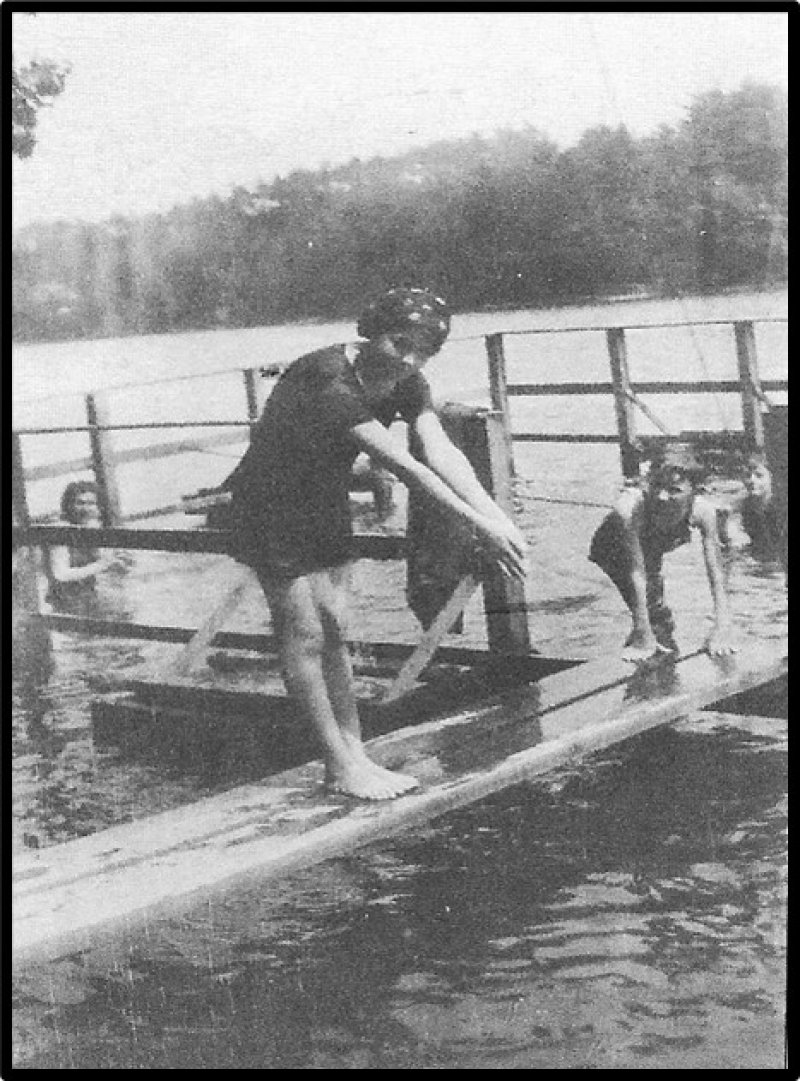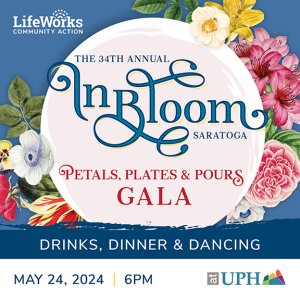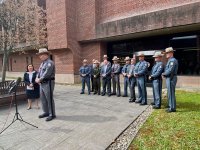On November 15, 1927, a civil engineer named R.E. Weber created a map that showed the boundaries of the then-famous Forest Park Amusement Park in Ballston Lake. The map was drawn so as to facilitate the sale of the entire property and make the area into individual parcels that people could buy. Thus ended the almost 25-year history of one of the most famous amusement parks in Saratoga County and began the process of opening up a large section of Ballston Lake to residential development.
It had all started when the trolleys started running from Schenectady to Saratoga Springs and the owner of those trolleys, the Schenectady Railway Company, decided it was a good time to create a place of amusement for its employees. A trolley ride from Schenectady to Ballston Lake cost about $1.40 or less in the early days of the twentieth century and took only about 1 hour. This was by far the fastest way for people to get to Ballston Lake than ever before and the people of Schenectady were anxious to use the trolley to get there.
The Railway Company, feeding on the desire of people at the time to pursue some leisure time activities, built a park, Forest Park, to satisfy those needs. A sign on the current-day bike path which sits in the path of the former trolley tracks rightly tell what it offered: “...Forest Park, which was opened in 1904 by the Schenectady Railroad [sic] Company. Cottage or camp life, restful recreation, good boating and fishing, Sunday concerts, picnic grounds, dance pavilion, merry-go-round and a good room at the Inn.” The all-inclusive “resort” (of sorts) catered to the city slickers who wanted to get away from it all and travel out into the country, but it also provided a place of great entertainment and fun for the locals in the Ballston Lake region. Ice cream stands and other foods, boat trips out on the lake, trying to grab the brass ring on the merry-go-round ride, and swimming in the “crib,” a structure with a bottom and sides built so that people would not drown in the lake which was very deep in this section. Women would come dressed in their Victorian finery, especially when there were dances at the “casino.” (Of course, all women at that time had to wear far less revealing swimwear than women wear nowadays.)
Boating out into the lake to then stop and have an alcoholic drink was one of the highlights of a visit to the park. It was only twenty-five cents for a ride on the Comanche or another of the many watercraft that would transport you on the lake. That is, until Prohibition hit and then the drinking had to end!
The merry-go-round was one of a kind. Its handmade wooden horses each weighed about 300 pounds. Grabbing the high-hanging brass ring dangling from the upper part of the ride would net you a free ride (worth all of 5 cents!) if you showed the attendant that you had secured one. Wonder how many people actually grabbed those rings? That merry-go-round now sits in Congress Park in Saratoga, minus the original horses which became lost somewhere over time.
Staying overnight at that time in history was a real treat especially for those who were not, by the standards of the time, wealthy. But, at Forest Park, you could rent a room in the Inn (the building still stands today!) or rent one of the many cottages that dotted the southern end of the lake. Of course, if your cottage was on the east side of the lake, opposite where the attractions were, you had to cross the “causeway,” a wooden bridge that connected the two sides of the lake and traversed the swampy area at the southern end of the lake. You can, today, still see where that causeway was located.
News articles described many parties and events being held there. The Salvation Army used Forest Park as a “gathering place for poor mothers and children” in August, 1915. The National Association of the Deaf held a three-day outing there in 1918. And, on a more regular basis, the Rubens Orchestra played there every Tuesday, Thursday, and Saturday in 1919 “until further notice,” according to the advertisement in the Ballston Spa Journal. In 1924, there were Tuesday and Thursday dances at the bargain price of ten cents, with Whitbeck’s Novelty Orchestra performing and, as the ad said, you could get there by way of “the Schenectady Railway Direct to the Park.” Obviously, the park was a good business decision for the company, too! In fact, the Street Railway Journal estimated that, in 1908, the park attracted 75,000-100,000 people and it was not unusual to have 3000 visitors on a typical Sunday. Very popular place.
But, as the Schenectady Railway Company found out, running an amusement park was not an easy task. In 1927, the company decided to sell the land and get out of the amusement park business. Lots were sold until the 1950s by the Forest Park Association when the last ones passed on to new owners. The lake became primarily a residential haven for summer visitors and, as time went on, for year-round homeowners.
But, Forest Park has remnants. The inn and the dining hall still exist, now as private homes. There are small reminders in trees and on buildings of the old amusement park days as well as one of the original outhouses which still stands. The building where Our Lady of Grace Church first held Catholic services for the Ballston Lake region was demolished but we know its location and its significance to the church community of the area. These “blasts from the past” are still visible and will be pointed out on a (sold out) tour of the grounds of Forest Park to be conducted on August 31.
Rick Reynolds has been the Ballston Town Historian since 2004. He is a retired social studies teacher at Burnt Hills-Ballston Lake Middle school and is the author of the book “From Wilderness to Community: The Burnt Hills-Ballston Lake Central School District. Rick can be reached at This email address is being protected from spambots. You need JavaScript enabled to view it.






































